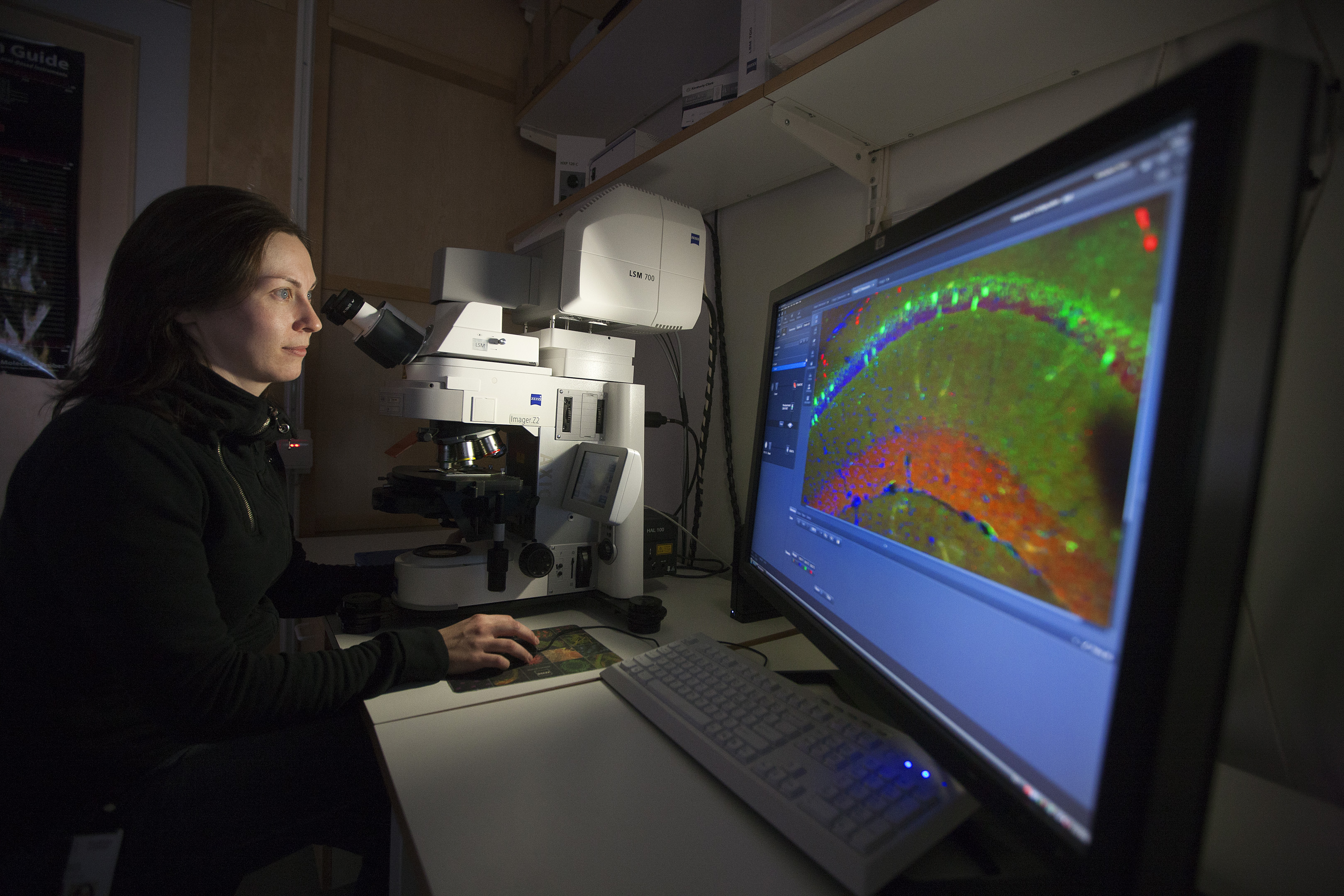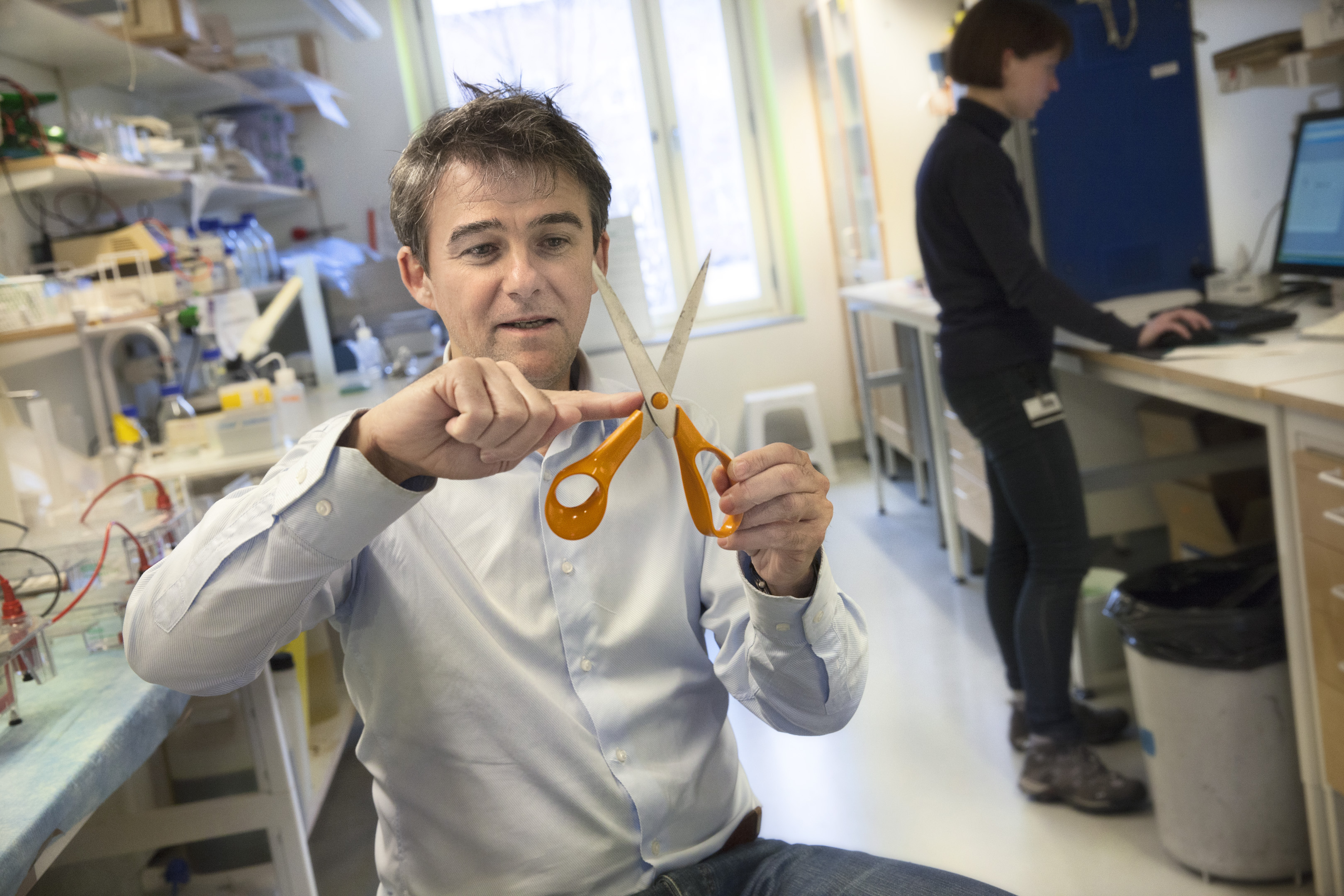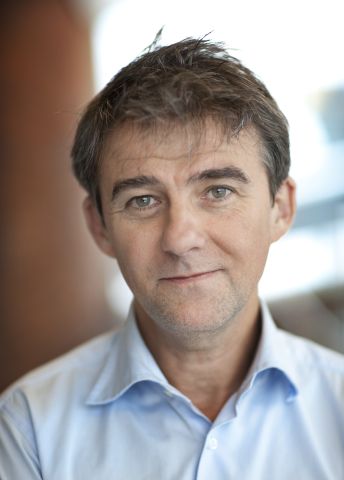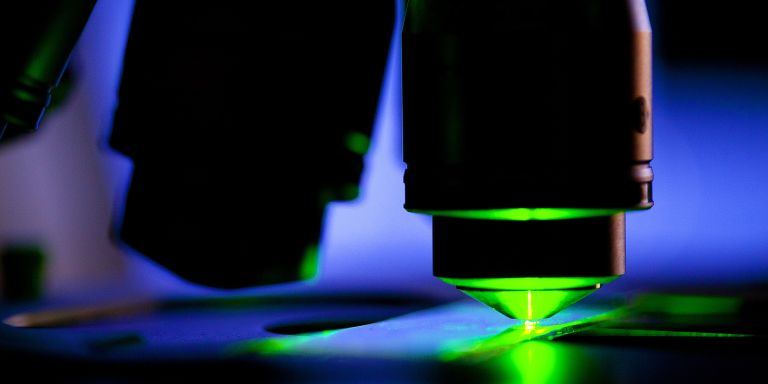Carlos Ibáñez, Professor in Molecular Neurobiology at the Department of Neuroscience, describes himself as a molecule nerd. By studying life's smallest building blocks he wants to find explanations for larger biological contexts. Both when they function as they are supposed to and when something goes wrong and diseases occur.
Carlos Ibáñez
Professor in Molecular Neurobiology at the Department of Neuroscience
Wallenberg Scholar 2012
Institution:
Karolinska Institutet
Research field:
Growth factors and their receptors
– Basically I'm a molecular biologist and we're a little obsessed with molecules. Often we have a close relationship with some special molecules that we want to know everything about. How they work, how they bind to cells and how they affect cells' function, Professor Ibáñez explains.
It is first and foremost growth factors and their receptors, which are receiver molecules on the cell's surface, that have captured his interest. They are of great importance, among other things for the development of the nervous system, signaling between cells and the body's metabolism. Carlos Ibáñez's field is basic research, where the focus is on the search for new knowledge and any applications lie much further down the road. But a few years ago he realized that there is a possibility that genetically engineered growth factors might be able to be used in the future to treat neurological diseases like epilepsy, Alzheimer's and Parkinson's for example.
– Nerve growth factors influence nerve cells' survival and growth so we believe that if we can understand exactly how this takes place we can also develop new drugs for several diseases that are caused by damage to nerve cells.
Research breakthrough
Nerve growth factors exist everywhere in the body. They act as messengers but what makes them really interesting is that the cells interpret the message, the signal, in different ways.
– I use growth factors a little like a window to look in on larger biological processes. Different molecules show different views that can give us new perspectives and angles of approach.
He says that it is more a question of luck and a good feeling if one finds something that can lead to a breakthrough.

If it was that or something else that meant that Carlos Ibáñez and his research team found something that no-one had seen before remains unsaid. But they have been able to show that a receptor called ALK7 is of crucial importance for the body's regulation of fat storage in case of high calorie intake and insulin secretion into the bloodstream. This opens up new possibilities as regards future treatment of both obesity and diabetes.
– When we first found this receptor in 1996 we didn't know that it had any significance for the metabolism. But we discovered that if we removed the receptor in mice, their insulin levels increased but we observed that despite an energy-rich diet they did not put on weight in the same way as the mice that still had the receptor. It seemed as if the mice without the receptor developed a resistance to obesity, Professor Ibáñez says.
It turned out that lipolysis, which is the process that breaks down fat, increases when ALK7 is removed.
A long way to go before it can be used
The research team is currently investigating what effect a mutated variant of ALK7 that they have designed has on adult mice. The clever thing about this is that the receptor can be controlled and turned on and off in the mice, which allows us to investigate the process better.
– As things look, by deactivating the gene we should be able to increase diabetics' insulin level and also affect their energy uptake, which might eventually open up new pathways for treating obesity and diabetes.
But Professor Ibáñez is emphatic that such a treatment method for humans is still in its very early stages.
Dr. Jekyll and Mr. Hyde
During his time as a Wallenberg Scholar he will also continue his research on receptor P75 which regulates the nerve growth factor. Professor Ibáñez describes the receptor as being something like Dr. Jekyll and Mr. Hyde.
– It has a good side that increases neurons' growth and survival rate but also a bad side that in certain cases does the opposite and instead reduces growth or kills neurons and glial cells and thus contributes to neurological diseases.
Its contradictory behavior depends on which signal paths the receptor activates and how they are balanced against each other. Professor Ibáñez wants to find a way to prevent the negative process from starting.
– The receptor is expressed early in the development of the nervous system but is later repressed and only appears in cases of minor neuron damage to clear away dead cells. But in diseases like Alzheimer's, ALS, stroke or epilepsy it sets off unrestrained cell death, causing massive damage.

To explain the process he picks up a pair of scissors. The two shanks represent the protein chains that receptor P75 consists of.
– The receptor causes a movement that initiates the negative process. If we can stop it we can also stop the cell death.
Carlos therefore wants to screen thousands of small molecules to find one that stops the movement or prevents the protein chains from joining up.
– Then we may be able to keep the receptor's positive sides and prevent the cell death, he says.
Text Carina Dahlberg/KAW
Translation semantix
Photo Magnus Bergström







